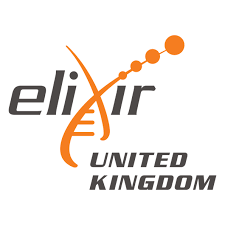GtoPdb is requesting financial support from commercial users. Please see our sustainability page for more information.
|
Synonyms: HB12 [6] | inebilizumab-cdon | MEDI 551 | MEDI-551 | MEDI551 | Uplizna®
inebilizumab is an approved drug (FDA (2020), EMA (2022))
Compound class:
Antibody
Comment: Inebilizumab is a humanized monoclonal antibody (mAb) directed against CD19, a cell-surface antigen expressed on cells of B cell lineage. Inebilizumab has potential immunomodulating and antineoplastic activities. Tested preclinically as a mouse anti-CD19 mAb (clone HB12; [6]), and initially humanized by Cellective Therapeutics, Inc. (a spinout company from Duke University where the antibody began its life) prior to being acquired by MedImmune (now part of Astra Zeneca) for commercial development.
Peptide sequence and structural information for this antibody are available from its IMGT/mAb-db record. A protein BLAST search of patented sequences reveals 100% matches between the heavy and light variable sequences of inebilizumab and sequences 106 and 111 respectively, in patent US8323653 B2 [1]. A detailed peptide sequence analysis suggests that inebilizumab is likely to be clone 16C4 in this patent. Ligand Activity Visualisation ChartsThese are box plot that provide a unique visualisation, summarising all the activity data for a ligand taken from ChEMBL and GtoPdb across multiple targets and species. Click on a plot to see the median, interquartile range, low and high data points. A value of zero indicates that no data are available. A separate chart is created for each target, and where possible the algorithm tries to merge ChEMBL and GtoPdb targets by matching them on name and UniProt accession, for each available species. However, please note that inconsistency in naming of targets may lead to data for the same target being reported across multiple charts. ✖ |
| No information available. |
Summary of Clinical Use  |
| A Phase 2/III clinical trial (NCT02200770) assessing MEDI-551 for neuromyelitis optica (Devic's disease; Orphanet ID ORPHA71211) and neuromyelitis optica spectrum disorder (NMOSD) is underway. Results from a phase 1/II study for relapsed or refractory advanced B-cell malignancies have been reported by Forero-Torres et al. (2013) [2]. Many other clinical trials for MEDI-551 are underway for indications including relapsing forms of multiple sclerosis, multiple myeloma, chronic lymphocytic leukemia (CLL) and other B-cell malignancies (click here for ClinicalTrials.gov's complete listing of MEDI-551 trials). EMA orphan drug authorisation for NMOSD was granted in 2017. First approval was granted by the FDA in June 2020, for the treatment of NMOSD in patients who are anti-AQP4 antibody positive (as a twice-a-year maintenance regimen following initial doses). |
Mechanism Of Action and Pharmacodynamic Effects  |
| MEDI-551 binds to CD19 which appears to induce a cytotoxic T-lymphocyte (CTL) response and antibody-dependent cellular cytotoxicity (ADCC) towards CD19-expressing B-cells. The ADCC effect may be due to the lack of fucosylation of MEDI-551's Fc domain [3]. |







